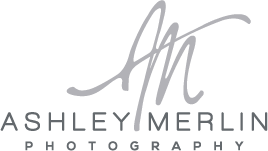I was recently asked to speak about my photography and being Jewish. A number have requested a copy of the speech - I've posted it below. Enjoy!
What do the names and images of Annie Leibovitz, Richard Avedon, Alfred Eisenstaedt, Diane Arbus, Elliott Erwitt, Robert Capa, Helmut Newton, David Seymour, Lee Friedlander, Helen Levitt, Steve McCurry, Bruce Davidson, Andre Kertész, William Klein, Lauren Greenfield or Alfred Stieglitz mean to you? Do you recognize these images?
They are all professional photographers and all Jewish. From a young age I’ve admired many of these photographers. Little did I realize we had more than one characteristic in common. When Rabbi Reimer initially approached me about this program, I was intrigued. As we began talking about Selichot and the Jewish high holidays and a possible link between photography and being Jewish, it left me stumped. I had never thought about this connection. I wanted to explore the
parallels with being Jewish - from family, traditions, community, and ritual, to transformation and what it means to be a photographer. How has it influenced my work? What is Jewish about what I do?
I’m a photographer by trade and storyteller by heart. I am passionate about
photography. I first picked up a camera when I was in 7th grade and I haven’t put one down since. Penny Wolin, a portrait photographer and a visual anthropologist, writes “It is not a coincidence, that Jews are attracted to the alchemy of photography, and that photography has found its storytellers in Jews.” One of the largest projects I’ve been able to both tell a story visually
and through words is through my book, Statuesque New Orleans, a collection of photography illuminating the city’s rich history of statues and monuments. In the months following Hurricane Katrina, everyone was nostalgic for New Orleans, including me. After 2 years of extensive research I had gathered information about where each statue was located, who sculpted it, when it was installed and the histories behind each. You can easily see what politician was influential at that time, which wars were being fought, and the artists that were popular.
I have had opportunities to photograph people over the years - head shots, news stories, fundraisers, parties. In a 2003 article in Commentary Magazine, William Meyers notes “Jews have also tended to be drawn to artistic genres that examine society as opposed to those defined by more formal or abstract considerations; they have been more successful at writing plays and novels than at lyric poetry. Within photography, and leaving aside Stieglitz and one or two others, they have pursued human-interest subjects, frequently concentrating on areas with a strong political, ideological, or news value.”
I’m lucky to have even photographed my husband for a feature story!
Helen Goodman explores the link between Jewish women photographers for the Jewish Women’s Archive “A significant number of Jewish American women photographers seem to have a strong social conscience—whether they were born to wealth as were Doris Ulmann and Diane Arbus, or in working-class neighborhoods, as were Helen Levitt and Rebecca Lepkoff, or come from abroad, as did Sandra Weiner. Many seem to reject obviously pretty or pleasing subjects, and sometimes conventional techniques, in favor of work that is intellectually probing, wryly amusing, radical, provocative, or even profoundly disturbing. And many appear to want their work to serve some moral, historical, or humane purpose however subtly expressed. Even Annie Leibovitz, the ultimate “celebrity photographer,” documented the tragedy of Sarajevo, where she traveled with noted photography critic Susan Sontag. Finally, many went to art school to study sculpture or painting and only later, often by accident, found their way to photography. Many seemed to feel it was a much less demanding medium to master than other art forms.
What does this all mean? What have I learned about my Jewish roots and my profession? The Photographers I mentioned earlier have shaped the world of photography. They have helped us to understand relationships with people, their images allow the invitation to stare, to look closer. They created a sense of community and connect us with the world. Sometimes provocative, their work even exposes their personal lives to the viewer. Whether it was war, documenting street life, rituals, parades, portraits, fashion, or editorial, their images and mine too take you on a journey, they tell a story.
Like photographer William Klein, I work in short and focused bursts. I enjoy capturing the beauty of the world. I like to connect with my subject and show a scene as I see it, real and vibrant. Though I didn’t realize Judaism influences me as a photographer, as I reflected on the photographers who have influenced me, I see a strong connection.
Whether it’s documenting New Orleans statues, streetcars or people - I can see common themes -images that focus on human-interest subjects and are news worthy, they evoke emotion whether happy or sad and have a sense of Tikkun Olam. Taking photographs give me purpose. I encourage you to ask yourself as you take photos of your family, travels, and celebrations - what does this image mean to me? How can I capture this moment so it’s meaningful? Take us on a journey. tell us a story.














